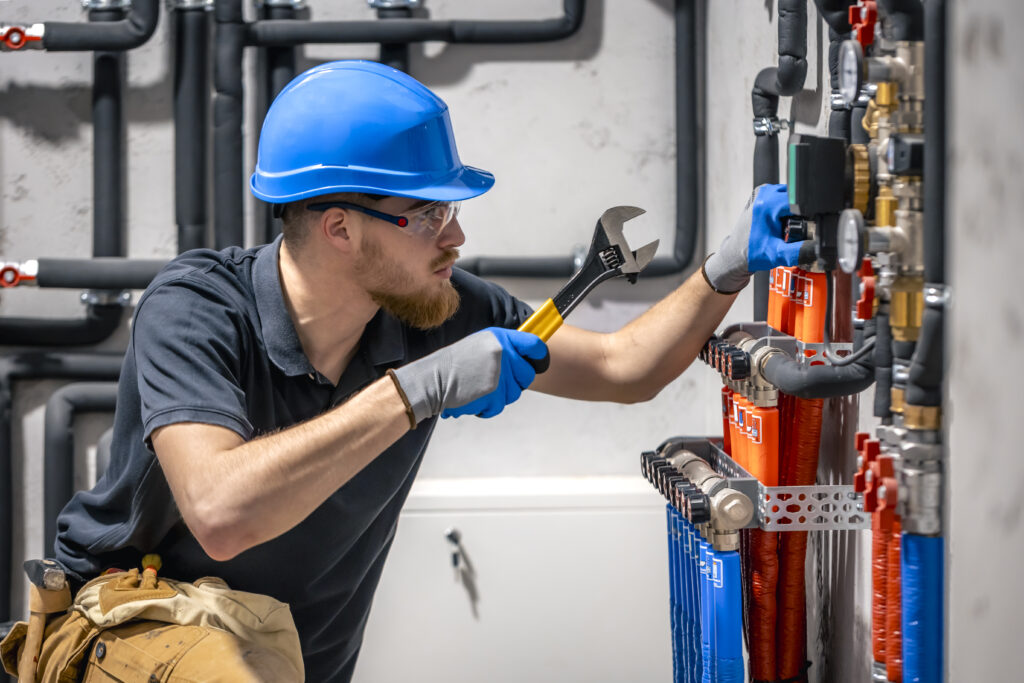For plumbing business owners, tapping into the right tools and strategies is crucial for sustainable growth. One strategy that has changed the game is aligning plumbing customer service with your Customer Relationship Management (CRM) model. But what exactly is a CRM model, and why is it so vital for plumbing businesses?
This blog will explore the role of a CRM model in plumbing customer service, why it matters, and how you can cater your services to seamlessly integrate with your CRM model. By the end, you’ll have actionable strategies to enhance your customer experience, improve efficiency, and build long-term loyalty.
What Is a CRM Model?
A Customer Relationship Management (CRM) model is a framework that helps businesses manage interactions and relationships with customers. Most CRMs today refer to software, but the model itself outlines best practices for how companies interact with clients and improve customer engagement. This includes everything from the first contact to follow-ups after a job is completed.
CRM systems store vital customer data, such as:
- Contact information
- Service history
- Preferences
- Feedback and reviews
For plumbing businesses, a CRM model can transform the way you operate. Since plumbing relies heavily on repeat business, loyalty, and reputation, using a CRM to improve the customer experience can set you apart from competitors.
Why Your Plumbing Business Needs a CRM Model
Using a CRM offers countless benefits. For plumbing businesses, here are just a few.
Simplify Tracking Across Customer Touchpoints
A plumbing job often involves multiple customer touchpoints—from an initial phone call to performing services onsite and follow-ups for potential maintenance. Without a system to track things, it’s easy for details to slip through the cracks. A CRM model ensures that every touchpoint is logged, accessible, and used to guide customer interactions, giving you clarity on how to serve customers effectively.
Identify Areas for Improvement
A comprehensive CRM model allows you to analyze customer feedback and service records. It helps you identify recurring complaints (like long wait times or incomplete work) so you can make informed decisions. Over time, this system of improvements can lead to smoother processes and higher customer satisfaction.
Understand Your Customer Base
Every plumbing business has a unique customer base, including homeowners, landlords, property managers, and businesses. A CRM provides detailed data on customer preferences and behaviors. It offers insights into commonly requested services, the busiest times of the year, or areas for potential growth.
Personalize Customer Interactions
By integrating a CRM model, you can create personalized promotions and service offerings. For example, a customer who previously called for pipe repairs might be interested in a water heater inspection. A personalized follow-up using data from your CRM can build trust and improve business.
Increase Retention with Proactive Service
Proactive customer service is essential in the plumbing industry. Your CRM can send automatic reminders for routine services, like annual plumbing inspections or water heater maintenance. One of the best times to reach a customer is when you offer a solution to a problem they don’t want to deal with. This can also improve the number of referrals you get.
How to Cater Your Plumbing Customer Services to Your CRM Model
Synergizing your customer services and CRM model takes work. These steps will help you make this process simple and effective.
1. Define Your Goals
Before you start shifting how you do customer service, determine the specific goals you want to achieve. For a plumbing business, you might include goals like:
- Reducing response times
- Increasing service reviews
- Improving first-time resolution rates
- Boosting customer retention rates
By clearly outlining your goals, you build a roadmap to build off of and see your progress over time.
2. Know Your Target Customer
Different plumbing businesses cater to different types of customers. For example:
- Residential plumbers may work with homeowners who value quick, affordable repairs.
- Commercial plumbers may partner with property managers interested in long-term contracts.
Understanding their pain points, preferences, and the platforms they use can help you connect with your ideal customer. Surveys, customer feedback, and historical service data in your CRM can help you define who that is and how to reach them.
3. Optimize How Customers Find and Contact You
Your CRM should record how customers find and interact with you. This may include sources like:
- Calling directly from online search results
- Booking appointments through your website
- Reaching out via text or messaging apps
Make sure you can track these different channels in your CRM. You can also automate responses when possible (e.g., confirmation emails, reminders) and include these touchpoints in your CRM to keep contact with your customers up to date.
4. Create Customer Service Pillar Stages
A CRM model thrives on structure. Split your plumbing customer service process into clear stages and record them in your CRM. For a plumbing business, these might include:
- Lead Generation: Record customer inquiries through calls, web forms, or social media.
- Booking: Schedule appointments with automated follow-ups.
- Job Execution: Provide technicians with access to customer history and notes from your CRM to ensure personalized service.
- Follow-up: Send post-service surveys or offer additional services.
Clearly defining these stages helps you deliver consistent processes and results as customers move through them. It also gives your team a framework for their service.
5. Use Data to Adjust and Make Decisions
Your CRM system will collect valuable data over time, but it’s essential to review it regularly. Many systems provide reports and dashboards that you can use to:
- Track service response times and resolve any issues.
- Identify trends (e.g., seasonal demand spikes or requested services).
- Adjust your marketing and service strategies.
For example, if you notice an increase in calls about drain cleaning in a specific area, you could offer targeted discounts there.
6. Innovate with Technology
Technology can improve plumbing customer service, but it’s important to consider how it might help you best. Some helpful offerings include:
- Add a live chat to your website that integrates with your CRM.
- Use geo-tracking to assign technicians to jobs based on location.
- Utilize AI-powered tools to predict customer needs (e.g., sending maintenance reminders or suggesting additional services).
As you use your CRM and plumbing customer service together, your company will feel more professional, consistent, and trustworthy.
Transform Your Plumbing Customer Experience Today
Using a CRM model for your plumbing business isn’t just about improving operations. It’s about creating connections with your customers, understanding their needs, and delivering exceptional service every time. If you’re looking to improve customer interactions for your plumbing business, check out Slingshot!Our answering services connect seamlessly with your CRM, and we make sure that every customer interaction is logged and acted on. We’ll help your team out—improve your plumbing customer service by contacting us today!



